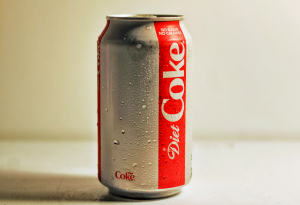A refrigerator is one of the most essential appliances in any home, running 24/7 to keep food fresh and safe. Given its continuous use, it’s important to clean and maintain your refrigerator regularly to keep it running efficiently and extend its lifespan. Here’s a guide on how to properly clean and service your refrigerator.
1. Regular Cleaning of the Interior
To maintain optimal freshness and hygiene, it’s important to clean the interior of your refrigerator every 3-4 months. Follow these steps:
- Empty the fridge: Remove all food items and store perishable ones in a cooler with ice packs to keep them cold while you clean.
- Take out removable parts: Shelves, drawers, and bins can often be removed and washed separately. Use warm, soapy water to clean them and dry thoroughly before placing them back.
- Wipe down the interior: Use a mixture of mild dish soap and warm water to clean the inside walls, ceiling, and door seals. Avoid using harsh chemicals that could damage surfaces or leave odors.
- Clean spills immediately: Any spills, especially sticky or greasy ones, should be cleaned right away to prevent odors and stains.
2. Clean the Coils
The condenser coils are critical for your refrigerator’s cooling function, and when clogged with dust, they force the fridge to work harder, leading to higher energy consumption and potential breakdowns. Here’s how to clean them:
- Unplug the refrigerator: Always ensure the appliance is unplugged before cleaning the coils.
- Locate the coils: Depending on your model, the condenser coils are either on the back or the bottom of the refrigerator.
- Vacuum or brush the coils: Use a vacuum cleaner with a brush attachment or a specialized coil cleaning brush to remove dust and debris. Do this every 6 months to maintain efficiency.
3. Check and Clean the Gasket
The door gasket, or seal, is crucial in keeping cold air inside and warm air out. Over time, food particles, grime, and mold can build up, preventing a proper seal. To clean the gasket:
- Use warm water and baking soda: Mix a solution of warm water and baking soda to scrub the gasket gently. This removes dirt without damaging the seal.
- Check for wear and tear: If the gasket is cracked or brittle, it may need replacing. A worn-out gasket can lead to energy loss and reduced cooling efficiency.
4. Change Water Filters
If your refrigerator has a water dispenser or ice maker, the filter needs to be changed regularly—typically every 6 months. Old filters can become clogged and less effective at removing contaminants, which can affect water taste and quality.
- Follow the manufacturer’s guidelines: Always use the correct replacement filter for your model, and refer to your manual for instructions on changing it.
- Set reminders: To avoid forgetting, set a reminder on your phone or calendar to replace the filter as recommended.
5. Keep the Temperature Stable
Maintaining the right temperature ensures your food stays fresh and your refrigerator operates efficiently. The ideal temperature for the fridge is between 35°F and 38°F (1.7°C to 3.3°C). For freezers, it should be 0°F (-18°C).
- Use a thermometer: If your refrigerator doesn’t have a built-in temperature gauge, use a separate appliance thermometer to ensure it’s staying within the proper range.
- Don’t overfill: Air needs to circulate to keep the temperature even. Avoid overpacking the fridge, which can restrict airflow and cause some areas to become too warm.
6. Defrost the Freezer
For refrigerators that don’t have a self-defrost function, regular defrosting is essential to prevent ice build-up, which can restrict airflow and force the unit to work harder.
- Defrost manually: When ice accumulation becomes noticeable (usually when it reaches 1/4 inch thickness), unplug the refrigerator and let the ice melt. You can speed up the process by placing bowls of hot water inside or using a fan.
- Wipe away water: After defrosting, dry the interior thoroughly before plugging the fridge back in.
7. Keep the Exterior Clean
The exterior of your refrigerator should also be cleaned regularly, especially the door handles and touchpoints, which can accumulate fingerprints and bacteria. Use a damp cloth and mild detergent to wipe down the exterior and handles. For stainless steel models, use a cleaner specifically designed for stainless steel to avoid streaks.
8. Check the Drip Pan
Many refrigerators have a drip pan under the unit to catch condensation. Over time, the pan can become dirty and, in some cases, develop mold.
- Access the drip pan: Refer to your user manual for instructions on locating and removing the drip pan.
- Clean it out: Empty any accumulated water, and clean the pan with warm, soapy water. Dry it completely before putting it back.
9. Monitor for Unusual Sounds or Issues
If your refrigerator is making unusual noises, has inconsistent cooling, or runs constantly, these could be signs that it needs maintenance or repairs. Catching these issues early can prevent more significant problems down the line.
- Address problems early: If you notice an issue, consult your user manual or contact a professional for service. Avoid ignoring potential problems, as they could lead to expensive repairs.
Conclusion
By cleaning and maintaining your refrigerator regularly, you can ensure it runs efficiently, keeps your food safe, and lasts for many years. Simple steps like cleaning the interior, defrosting the freezer, and keeping the coils free of dust can go a long way toward extending the lifespan of your appliance and saving you money on repairs and energy bills.


